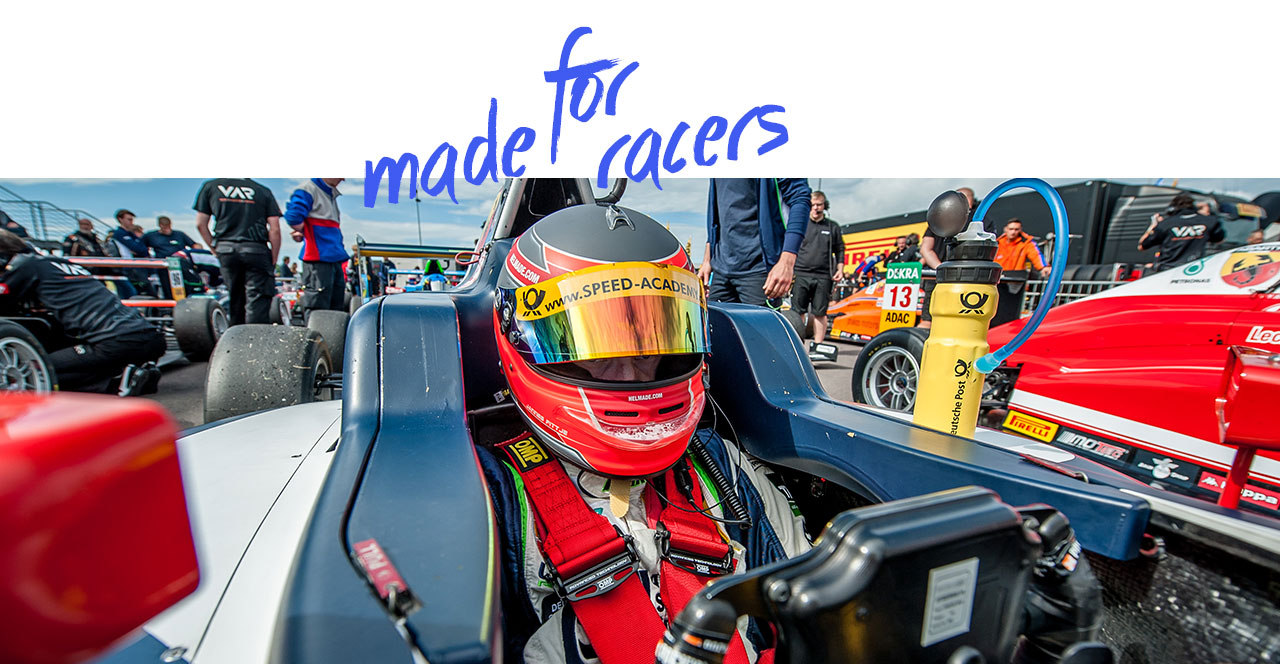- Categories
- Karting
- Child Karting
- Car
- Motorcycle
- Rallye
- Already got a helmet?
- Paintwork only

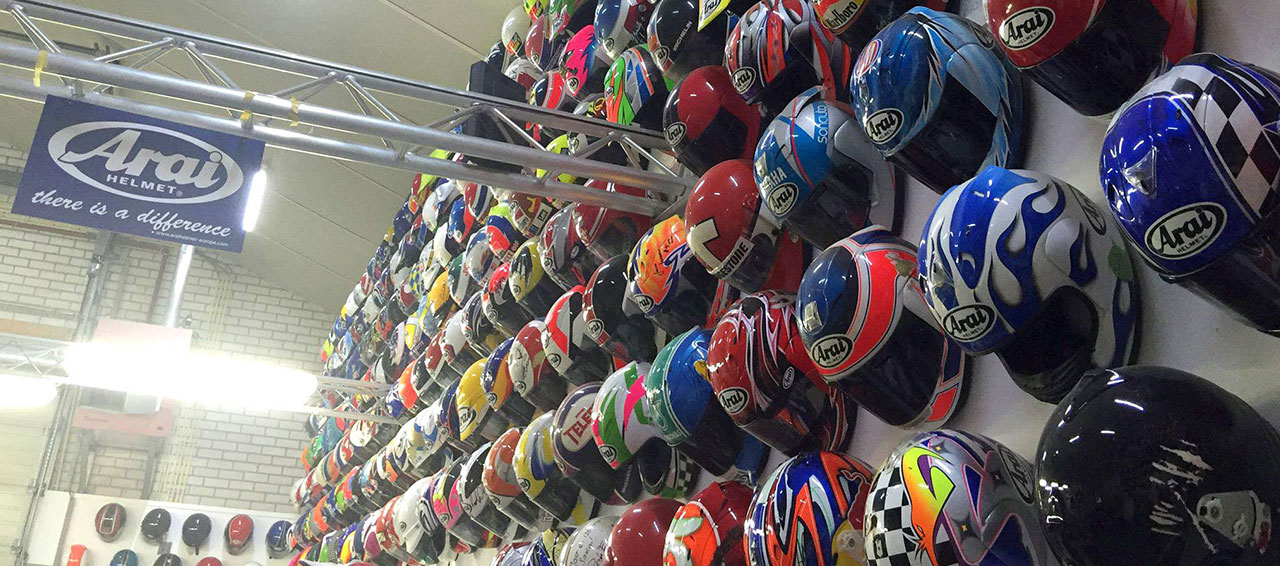
We at helmade are obsessed about helmetdesign and handmade quality. Before we’ve brought helmade to life in January 15 we had to think about the right products we want to bring onto our platform. When it comes to qualitative helmets we immediately landed on the Arai brand. When we first met Peter Bürger who is the Arai distributor for kart and car racing helmets in Germany, we got introduced to the past and future of Arai helmets and of course we’ve learned a lot about their products. Especially as Peter is also the Formula One service manager for Arai. He is an inspiring source for deep product insights and the history of Arai. In February this year we got the opportunity to join a product insight workshop at Arai helmets Europe which was truly inspiring and led us to tell you more about Arai in our helmade magazine.
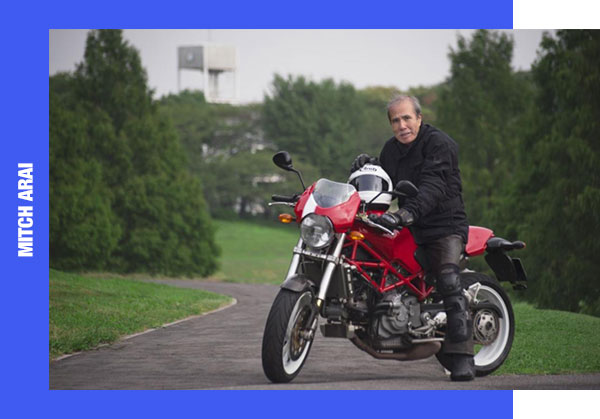
Arai helmet LTD was founded in 1926 and is one of the leading helmet manufacturers in the world. For almost 100 years biker, motorsports athletes, kart and racing drivers trust in the Arai brand. True craftsmanship combined with innovative technologies comes to life in each handmade helmet from the Japanese company in Ohmiya / Tokyo. Several world championship titles and victories in all motorsport series around the world and a wide, unique range of high quality, make Arai helmets a highly coveted and value product.
There was a time, around 40 years ago, when all helmets were quite similar in their ability to protect. In retrospective, Arai had to admit that their product was only average at that time. Mitch Arai, however, became dissatisfied with being just average and wanted Arai to be something more. In 1976, he not only made the decision to “make Arai better”, but set his goal to “be the number one helmet in the world”.
Mitch Arai set his goal to make better helmets. For Arai this meant and still means to offer more protection. Mitch, like his father Hirotake, was a rider and riders want to protect themselves.
With his experiences in building helmets, he knew that shell strength was absolutely crucial in order to resist penetration of sharp objects and to maintain shape in a possible impact. Therefore Arai is working with a strong, round shell that is constructed to be able to glance of an object, diverting energy and minimizing how much direct energy the helmet must stand. This is the core of how helmets at Arai were designed and constructed which hasn’t changed till today.
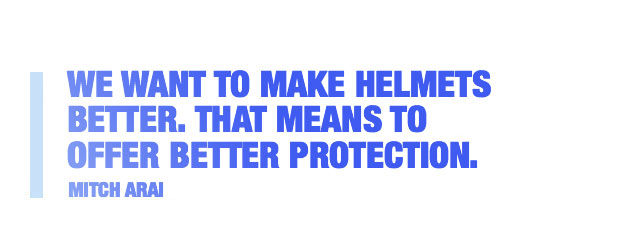
The strength of a helmet shell is directly related to the shell thickness and consistent shell thickness provided the best chance to maintain shape and withstand big glancing blows. Mitch began by trying to devise methods that would produce more consistent shells, specifically consistent shell thickness, which was extremely difficult at that time, and still is today when using the bag molding method. However, bag molding increases the ratio of fiber to resin, producing a stronger helmet shell.
Mitch himself experimented for months, into the late hours every night, trying to find a solution to produce consistent shell thickness. More experienced men in the shell molding department couldn’t believe what he is doing. After many months, some of these men, tired of seeing him struggle, came to appreciate what he was trying to achieve and offered their help. These men joined an effort with a desire to contribute something more out of a passion for their work and a pride in what they create.
After some progress, it was clear to everyone that it was impossible to achieve absolute consistency in shell thickness, so it was Mitch who implemented a double quality control check of every single helmet shell in order to better identify inconsistencies so they can be corrected. Since this time, every single Arai shell is inspected by two individual and separate quality control check points.
Once the shell was brought to a quality level that satisfied the “shell experts”, attention was directed toward the interior liner. Managing impact energy, slowing the high speed of an impact within the short distance of a helmets liner, is key to protect the head and brain. A strong shell displaced that energy over a wide area and it was the liners job to handle it. Many different materials were considered, but EPS proved to have the best performance across a wide range of temperatures, and till today it is still the best material available to deal with absorbing more impact energy in the smallest space possible, while at the same time adding minimal weight.
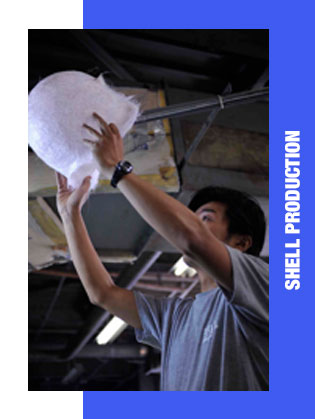
Arai then significantly improved the helmet performance by pioneering the concept of multi-density liners to better deal with different impact energies in different areas around the helmet, allowing the maximum amount of energy management with the minimum liner thickness.
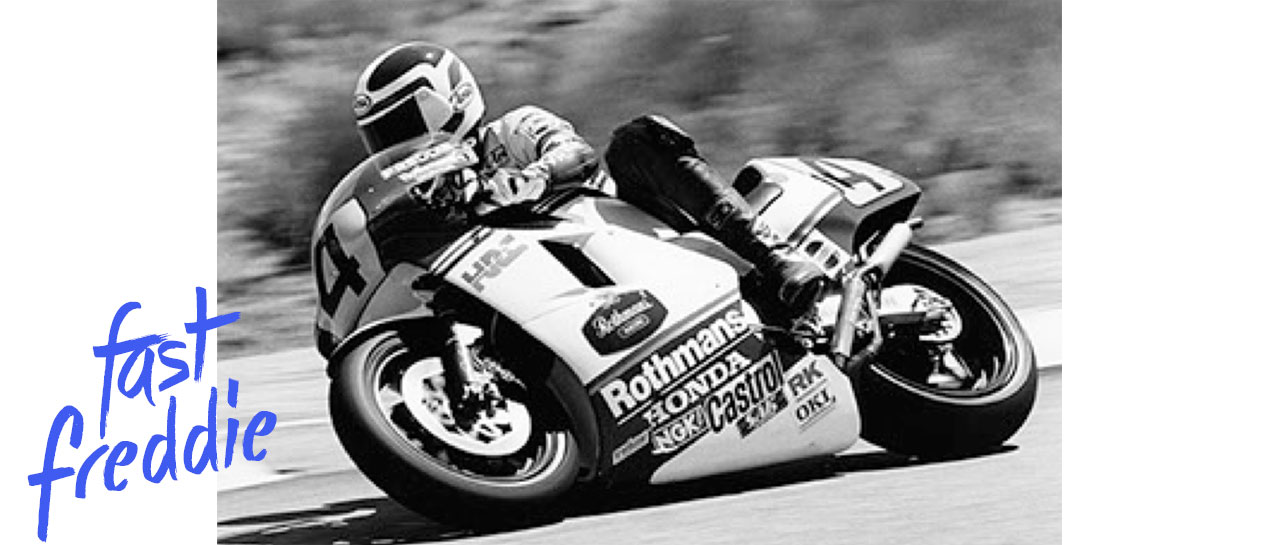
With an improved shell and new multi-density liner, Arai set out to prove their efforts by having racers put their helmets on to test. Although there was no real plan in place, Arai was heading in the right direction with doing this. Rider protection increased and Arai quickly gained a reputation as being a better helmet. Once the Japanese market was dominated with Arai, sights were set on America, and as they did in Japan they approached riders with the concept of better protection. After convincing a few, just as it happened in Japan, it didn´t take long for word to spread about a better helmet from Arai.
Soon, Arai was on the world Moto-GP scene, being worn by racers from around the world, winning races and championships, and Mitch´s goal was reached – the company that bears his family name is acknowledged as producing the #1 helmet in the world. Freddie Spencer was one of the earliest and most important ambassadors of the Arai brand in Grand Prix racing.
Everyone working for Arai take great pride that the #1 stands for protection. It has been said of helmets that liabilities of manufacturers primarily cease by meeting requirements of applicable standards. However, there are limits to any helmet, while there is no limit to severities of impacts outside of the test lab.
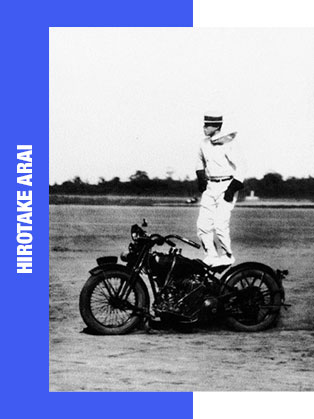
One such difference is in a foundational basis for Arai helmet shells, referenced as R75. R75 sets a criteria for a shell shape that is rounder and smoother, which is better suited to deal with the realities of an actual crash. Such rounder and smoother helmet shell designs are better able to glance off obstacles, slide more easily over uneven surfaces, minimizing impact energy that is sent directly into the helmet as well as reducing excessive rotational forces.
The focus on safety is typical for Arai through the many years of existence. The founder of the company, Hirotake Arai, was a passionate hat maker, but although a really enthusiast rider. Long before helmets were available in Japan, Hirotake Arai showed his skills on a two wheels vehicle.
In the fifties there were no helmet manufacturers in Japan and as Japan was a closed market, it was very difficult to buy a helmet. No legal standards, no manufacturers but after a few spills Hirotake Arai knew he wanted a good helmet for his own safety and later also for a couple of friends. It was the start of Arai as a helmet manufacturing business back in the days. The next thing was to develop his own testing standards and testing equipment. As a hat maker he knew that people have all different head shapes, creating a need for a perfect fit of the helmet.
The Arai story says, Hirotake Arai’s intention was not to start another commercial business, but to create helmets that were able to protect his fellow riders - without any compromise and passion.
